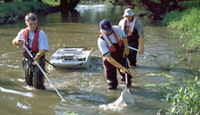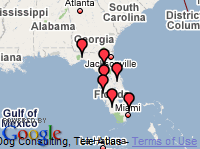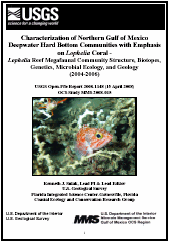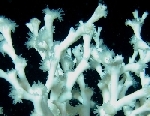FISC - Biology

ABOUT FISC
SCIENCE WEBSITES
DATA CENTER
CENTER INFORMATIONOFFICE LOCATIONS
FISC - Headquarters FISC - Gainesville |
FISC - Biology
Research and monitoring to meet the needs of managing the resources of the southeastern region.FISC biological science capabilities include applying Adaptive Management research and tools to resource management decisions that involve high levels of uncertainty. This work is done in cooperation with federal and community partners to address societal needs. Biologists at FISC are also involved in gathering long term data sets to examine changes in populations and habitats over time. A well known data set is the Manatee Photo Identification Database. Manatees are just one example of key indicators species that are part of long term ecosystem studies. American alligators are another example of an indicator species that provides scientists and resource managers with insight into ecosystem health based on the population health of alligators in their natural environment. One of Florida's, and the nation's most critical environmental threats is the increased numbers and populations of invasive species. Across the nation invasive species are impacting rivers, wetlands and lakes. The FISC NAS program maintains up to date information on invasive and exotic species across the country providing species alerts, fact sheets and maps to track and predict the spread of invasives. USGS Florida Science HighlightsSilent Streams?
The 700 fishes now listed represent a staggering 92 percent increase over the 364 listed as "imperiled" in the previous Characterization of Northern Gulf of Mexico Deepwater Hard Bottom Communities with Emphasis on Lophelia Coral - Lophelia Reef Megafaunal Community Structure, Biotopes, Genetics, Microbial Ecology, and Geology (2004-2006)
There is a rapidly growing social, political, and scientific awareness of the destruction of sensitive deep coral reefs, and the potential loss of unexplored biodiversity by human activities including bottom trawling, anchoring, cable-laying, ocean dumping, pollution, and offshore oil and gas development. In the Gulf of Mexico, the Minerals Management Service (MMS) exercises an ecological stewardship role for sensitive hydrocarbon seep, hard-bottom and reef habitats relative to hydrocarbon exploration and development activities.
Of Current InterestUSGS DISCOVRE EXPEDITION
Diversity, Systematics, and Connectivity of Vulnerable Reef EcosystemsThe 4-year multidisciplinary research program will focus on understanding the physical oceanography, biology, ecology, genetic connectivity, and trophodynamics of deep coral environments in the Gulf of Mexico (300-1000 m depths), both within natural and artificial (shipwreck) sites.
Recent Publications
Florida Weather |